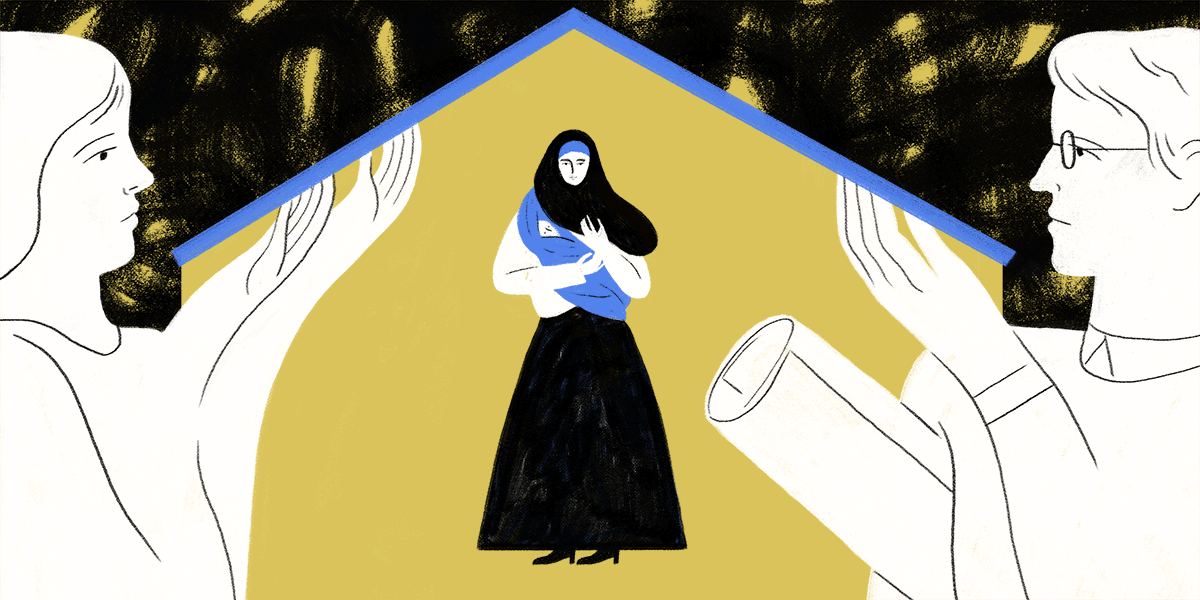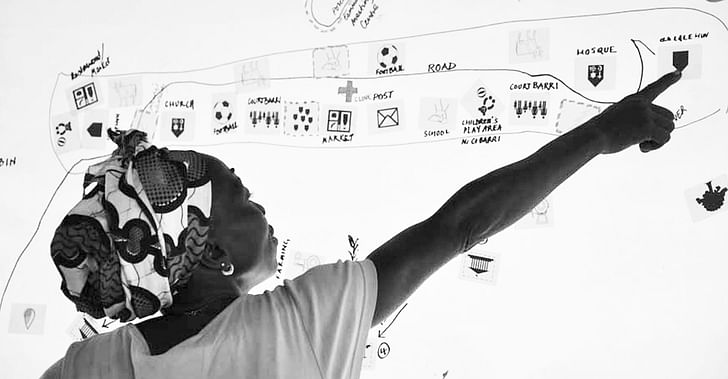

Last month, Airbnb announced they had hired former Architecture for Humanity co-founder Cameron Sinclair to lead their project to supply temporary housing to 100,000 people in need, shortly after launching a program to secure refuge for members of Chicago’s homeless community. Users of the online hospitality service can now register as ‘hosts for good’, and architects are stepping in to make that happen. IKEA’s recent drive to create flat-pack temporary homes for refugee camps through their Foundation in collaboration with UNHCR is another example of how companies are exploring philanthropic interests through the medium of architecture. This month’s feature engages with architects adopting a range of business models to pursue social responsibility and looks deeper into ways the profession is engaging with building for a common good.
As architects, we are increasingly aware of humanitarian disasters, environmental, social and political, which impact vulnerable communities worldwide. Perhaps our screen-time has some part to play—while social media channels are prone to reinforcing our own situation and beliefs, internet platforms do have the potential to connect us to far-off events unfolding in real-time. Be it friends marking themselves safe after the Paris attacks, or a live Twitter feed of the tsunami sweeping across the Japanese coast, many of us feel ever closer, moved and engaged.
Despite a lack of reliable international figures mapping the architecture nonprofit sector (the statistics tend not to cross national borders), according to the 2016 Blackbaud Institute’s National Report, online-giving in the US grew by 7.9% last year, with the ‘arts and culture’ sector leading the way. In the past decade, nonprofit and other civil society organizations—also known as the ‘third sector’—are experiencing somewhat of a global explosion. To take a recent and well-documented humanitarian crisis, the 2011 Japanese tsunami, aid workers on the ground witnessed a surge in civil society activism, albeit mostly short-term. The number of ECOSOC-affiliated NGOs undertaking projects in Tohoku were totaled at 217, in contrast to the 20 organizations present when the Kobe earthquake struck Japan in 1998.When a building is both ‘beautiful’ and ‘good’ in equal measure, it is held up as a pinnacle of architectural mastery
Researchers analyzing the growth of the nonprofit sector point to the global economic crash and recession of 2008 as key contributing factors in the rise of civil society activism in the architecture profession. When the financial crisis struck, many professionals who had spent the majority of their careers working in established firms were released from their positions. According to the US Department of Labor, employment in architecture firms plummeted from 224,500 to 184,600 nationally during the six month period between July and November 2009. In response, many unemployed architects began practicing as sole-traders and took on jobs such as local domestic work or offered their services pro-bono to charitable organizations.
The financial crash coincided with an ideological shift towards the social implications of architectural design. While this approach is not new, in recent years it has become firmly rooted within the mainstream consciousness, headed by architects such as Shigeru Ban, Jan Gehl and Alejandro Aravena, to name but three. Events such as the 2016 Biennale, entitled ‘Reporting from the Front’, steered architects towards a human-centric practice, one that attempts to solve social issues through design. Firms such as Shigeru Ban Architects are translating this trend stylistically, creating buildings that celebrate a DIY approach to making, or the bottom-up ‘architecture hack’, echoing the tectonic language demonstrated by many NGO-projects. More than ever before, when a building is both ‘beautiful’ and ‘good’ in equal measure, it is held up as a pinnacle of architectural mastery.

Many of us are also tuned in to the detrimental and polluting effects the construction industry is cited as having on the environment, set to worsen as we undergo mass global urbanization. Numerous articles also point to poor buildings as a main culprit in worsening long-term health in urban slum districts. According to the US Green Building Council, the built environment now accounts for more emissions than either transport or industry. Given these factors, perhaps it is no wonder that architects, enabled by online activism and facilitation platforms, are reaching out.
Architecture professionals are trained to possess specialist skills, which, when applied sensitively, have the potential to be pragmatic and useful additions to disaster aid and rebuilding project teams. As Carly Althoff, project manager at Journeyman International (founded in 2009 to pair interested architects with worldwide aid projects) explained, “Architects are trained coordinators, and this skill is so precious when dealing with the moving parts in the world of humanitarian design. We are also known for our ability to envision and look at problems from very unique perspectives. Therefore there is a very special role that we as architects can fill in understanding the complexities of disaster relief and aid.” I also spoke to Challenging Practice, a program offered by the International Chapter of ASF, which aims to provide a critical approach to the surge in volunteer-based practice. They suggest that “architects have a role to facilitate and participate in meaningful public conversation, both to understand the requirements and aspirations of the local community and translate these into spatial and visual ideas.”There is a very special role that we as architects can fill in understanding the complexities of disaster relief and aid
Despite architecture’s overt link to reconstruction, it was by no means the first profession to encourage its members to donate their time on a voluntary basis. Architecture for Humanity (AfH), founded by Kate Stohr and Cameron Sinclair in 1999—now rebranded following bankruptcy as the Open Architecture Collaborative—was among the first international NGOs specifically calling for architects’ participation. Formed in response to the humanitarian crisis in Kosovo, they suggested that, at the time, an equivalent organization for engineers had already been operating for twenty years. In outsourcing an open competition brief via email and publishing it online for professionals and students alike, AfH pioneered a business model that is now the basis of business operations for many organizations in the field today.
There are obvious financial limitations for practices that choose to adopt a humanitarian agenda, as many clients are unable to pay at point of access for their work. For architects who aspire to address humanitarian issues, this often means partnering up with external funding organizations or, increasingly, working for multinational businesses keen to emphasize corporate social responsibility by setting up philanthropic foundations and associations. Last month, Airbnb announced they had hired former AfH co-founder Cameron Sinclair to lead their project to supply temporary housing to 100,000 people in need, shortly after launching a program to secure refuge for members of Chicago’s homeless community. This marks an interesting development in how the architecture nonprofit sector is funded—perhaps unsurprising given the extensive resources possessed by some multinational corporations, which increasingly overpower those available to entire nations, notably those in the Global South.

Collaborating with large and influential corporations and a maze of interested parties on the ground can become complex. Online facilitation platforms to coordinate and aid communication and link actors, such as the Tohoku Projects Map, are becoming increasingly common in the aftermath of catastrophes when there lands a frenzy of initiatives and agendas, with little communication or coordination. Professionals working within the architectural nonprofit sector highlight their concerns over large global organizations losing sight of their aims and beneficiaries by attempting to manage too many diverse projects. As practicing architects, many of us will be familiar with the art of balancing visions—those of the client, the user, our own artistic ambition. In the nonprofit sector, those power relations are shifted, and as an architect working in this field it is evermore crucial to also foreground the needs, wishes, and cultural heritage of the communities you work within, whose voices can become distant and quiet.
As practicing architects, many of us will be familiar with the art of balancing visions. In the nonprofit sector, those power relations are shifted
Liz Brown, co-director of the ASF Challenging Practice course in the UK, explained how technology is enabling much of the work she does out in the field. “The Internet and the amount of publicity achievable [online] means that communities can have a stronger voice,” she suggests, “which can gather momentum quickly and bring widespread publicity.” She goes on to stress the benefits of online connectivity for the communities in which she works. “Meetings can be held over Skype to share ideas and contribute to projects, with Internet increasingly accessible even in very poor areas today—due to projects like Google’s Project Loon, internet.org and Buffalo Grid, this provides the potential for distributing self-build architectural plans tailored towards different environments.”
Critics of large corporations engaging in humanitarian work—whether directly or through establishing foundations—are concerned philanthropy is being used to deter focus away from the less marketable aspects of corporate enterprise. Prior to its flurry of humanitarian initiatives, Airbnb was heavily criticized in the media over its supposed gentrifying and commodifying urban side-effects, the so-called ‘Airbnb effect’. Journeyman International, who are funded in the main through corporate sponsorships or their alumni network, recommends sponsors must engage in best practice. “I think these large companies should be involved at every level of these programs and offer opportunities for collaboration with like-minded architects, designers, and strategic thinkers,” suggests Carly Althoff, project coordinator.
How can an ethical and fair approach be maintained when there is so much influence and political power on the table, especially in countries that are in critical need? Archive Global, a US-based nonprofit which tackles health issues through housing design, suggests, “It is important to keep ethics, compassion and respect in mind. The whole talk of corporate and social responsibility is wonderful but sometimes good intentions can lead to harmful unintended consequences.” They argue that when projects are taken over by large corporate funders, human beings are sometimes written out of the process. “People cannot simply do something and feel good about it,” they tell me, “there are responsibilities that come with any work.”

Specialized charities that offer aid through architectural services are realizing the benefits of ‘going big’. Advantages include access to larger sources of funding, additional expertise and possible collaborations with government departments or international bodies such as the UN. Archive Global has seen these kinds of benefits as their organization has grown. “Simultaneously working closely with relevant ministries and departments enables us to scale our work to a degree that working by ourselves wouldn’t allow. With the proper partnership, we can create more sustainable, higher value, and larger impact projects.”
Some of the most extensive global players in the architecture nonprofit sector include Article 25 (established in 2006, now partnered with Archive Global), ASF International (2007), Open Architecture Collaborative (2016) and Building Trust International (2010). Daily activities undertaken within these organizations range from construction out in the field to political advocacy—and everything in between. Their construction projects span numerous global locations. For example, Article 25’s programs are spread over 34 different countries. Some organizations are also tapping into celebrity and ‘starchitect’ culture to gain publicity. For example, Make it Right, an organization formed following the 2007 hurricanes Rita and Katrina in the Gulf Coast and fronted by Brad Pitt, gained substantial media visibility for commissioning an international team of architects, including Frank Gehry, Hitoshi Abe and David Adjaye. Their task was to design a neighborhood of temporary pink houses as a statement that the site should not be abandoned and affected communities relocated.
Other than volunteering abroad for a nonprofit organization, working pro-bono part-time is the second main business structure architects are adopting to enable them to practice within this field without taking long breaks from the office. Speaking to Architect in 2015, John McNulty, director of a California-based architecture firm, suggests their company’s success in taking on some unpaid projects is that they have to be built into hourly rates. “We already have money allocated,” he explains, “the firm treats these projects just like billable work. If [we] bill for 10% of the project’s overall cost, that same percentage would still be recorded in the books as a fee, even if its pro-bono work and we don’t actually bill the client. It has all the attributes of a real project, because it is a real project.”
The whole talk of corporate and social responsibility is wonderful but sometimes good intentions can lead to harmful unintended consequences
From personal experience, architecture firms that intend to work on projects pro-bono must ensure that, unless under extraordinary circumstances, they are not undercutting local competition, are paying their staff a living wage, and are not falling down the rabbit hole of relying on free ‘intern workers’—a crisis in the profession in general. Dedicating some time to the voluntary sector has been seen to have clear benefits, suggests Liz Brown from Challenging Practice. She told me that in her day job within a medium sized architecture office, her work for ASF is generating a positive impression. “When my employer tweeted about my role in ASF-UK it became our most viewed post—and we tweet a lot!”
Some firms have found work in this sector so productive that they have split their business to create a separate ‘humanitarian wing’. The Japanese architect Shigeru Ban, who rose to fame with a series of internationally acclaimed projects after the 2011 Tohoku earthquake, divided his firm to create Voluntary Architects Network (VAN). Primarily publicized through Facebook, VAN forms a subsidiary arm of the profit-making business. This separation allows VAN to acquire state funding for international aid and rebuilding projects, such as the Japanese government-funded Cardboard Church in L’Aquila, Italy (pictured above).

As might be expected, given the turbulent political and social contexts in which volunteer architects practice, work in the humanitarian sector is not often smooth sailing. Projects are known to fall through, contractors do not show up, and funding channels are cut—no matter how carefully the project is carried out. Journeyman International encourages architects to be constantly aware of unpredictability, especially when working in remote locations. “When undertaking projects in developing countries, you are exposed to regulatory conflict and inconsistency that doesn't happen quite as often here in the States. It can be difficult to anticipate anything, so you must stay on top of your game in communicating with clients and researching the local sociopolitical climate as often as possible.”
There is, however, much experience to be gained when working on projects that take you out of your comfort zone as a professional. “You realize how little you know and how small your world view once was,” Carly Althoff from Journeyman International suggests. “And it is quite humbling. It is my hope that everyone who takes part in a project like this, whether at home or abroad, will gain wisdom and renewed sense of their own humanity.” Whether all goes to plan or not—and you innovate through it—a project approached with care and sensitivity that aims to benefit others can reveal a wealth of lessons, not only about method and culture, but also about your practice and values.
Each organization I interviewed emphasized the importance of listening to the communities they are designing in. Local people often possess essential knowledge, not only concerning materials and construction techniques, but also regarding cultural sensitivities and how future users may engage with the buildings. When asked what advice they would like to pass on to architects and design professionals interested in getting involved in the field of humanitarian architecture, Archive Global replied, “We must understand as completely as possible the context of the project. What needs are to be met? How does one use the space? What are the cultural practices around spaces and materials? What can the building do for the community?”
NEXT MONTH: We take a closer look at the typology of the refugee shelter, exploring different concepts and speak with the architects and designers behind them.
Hannah is an architect and writer based in Tanzania, East Africa. Her monthly feature column for Archinect, 'Architecture Futures', explores the technological developments currently shaping the architecture profession within wider cultural and political discussions by bringing together critical ...
No Comments
Block this user
Are you sure you want to block this user and hide all related comments throughout the site?
Archinect
This is your first comment on Archinect. Your comment will be visible once approved.